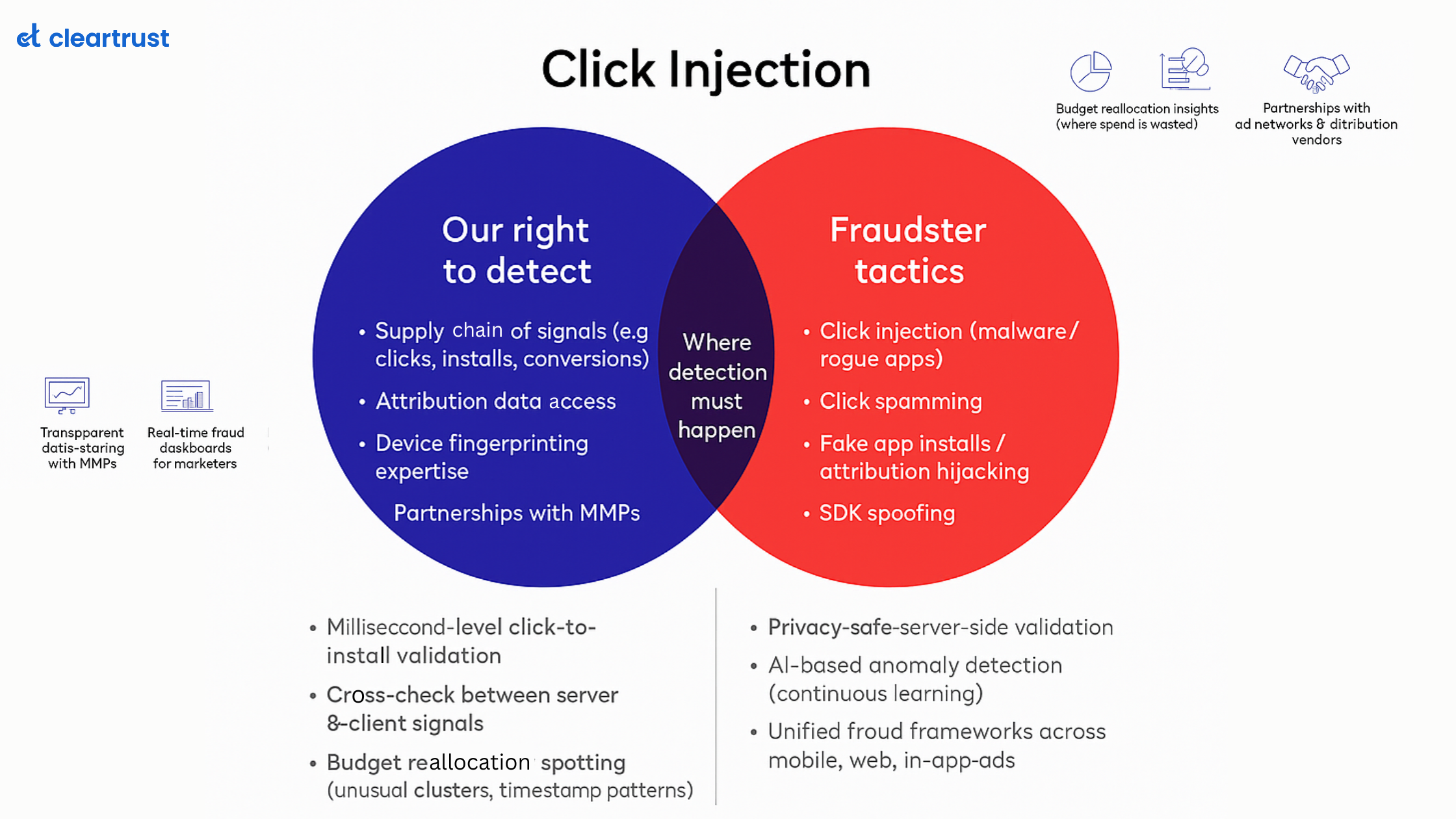In the ever-evolving landscape of digital advertising, the phenomenon of "click redirection" has emerged as a significant concern for programmatic publishers. As digital publishers, we often rely on the premise that when a user clicks on an ad, they will be taken directly to the intended destination – a seamless journey for both the user and the advertiser. However, the reality can be quite different.
According to sources, 28% of loss due to web fraudulent traffic happens over mobile. Click redirection and other forms of mobile ad fraud form a majority of this loss that can severely impact mobile advertisers as well as publishers. From credibility issues to the generation of fraudulent impressions, this blog delves into the intricate world of click redirection, shedding light on how it works, its impact on programmatic publishers, and most importantly, how you can protect your campaigns against this ad fraud technique.
What is click redirection?
Click redirection is a deceptive practice that can undermine the integrity of online advertising campaigns. To understand it better, let's break down how this technique operates
- Initial Click : It all starts with a legitimate user clicking on an ad displayed on a publisher's website. This act, often initiated out of genuine interest or curiosity, triggers a sequence of events.
- The Redirect Script : Unbeknownst to the user, embedded in the ad or the ad tag is a malicious redirect script. This script is designed to divert the user's intended destination to a different URL, leading them away from the advertiser's intended content.
- Fraudulent Intermediary : Click redirection often involves a fraudulent intermediary, such as a click farm or a network of bots. These actors artificially inflate the click count, making it appear as if more users have shown interest in the ad than there actually are.
- Landing on an Unintended Page : The user, instead of reaching the expected landing page, ends up on an entirely different website. This destination could be another advertisement, an affiliate offer, or even a malicious site. The original advertiser's message gets diluted, and their objectives are compromised.
- Loss of Quality Engagement : Not only does the user experience suffer, but the advertiser's budget is also wasted on irrelevant or fraudulent clicks. This devalues the effectiveness of the entire ad campaign.
- Masking the Fraud : In some cases, click redirection may cleverly mask itself by briefly redirecting users to the intended landing page before diverting them elsewhere, making it more challenging to detect.

Impact of click redirection on publishers
Apart from advertisers, publishers also face harsh consequences of this unhealthy scheme deployed by fraudsters.
- Ad Budget Drain- Click redirection inflates the number of clicks an ad receives, leading to a considerable drain on the advertiser's budget. These clicks often provide no genuine value, leaving both the publisher and the advertiser with an ineffective ad campaign.
- Decreased Trust- When users are constantly redirected to unrelated or low-quality websites, trust in the publisher's platform can erode. This can harm the long-term relationship between the publisher and its audience.
- Reduced Advertiser Satisfaction- Advertisers who repeatedly fall victim to click redirection are likely to be dissatisfied with the publisher's performance. This can lead to lost partnerships and revenue.
- Reputation Damage- Programmatic publishers depend on a strong reputation for attracting both advertisers and users. The prevalence of click redirection can tarnish that reputation, making it difficult to maintain and grow the user base.
How to avoid click redirection?
Now that we understand the detrimental impact of click redirection, it's crucial to explore strategies to protect your ad campaigns and, by extension, the interests of programmatic publishers. Here's how to avoid falling victim to this ad fraud technique
- Vet Your Ad Partners- Before collaborating with any advertiser or ad network, publishers must conduct thorough research. Take extra effort and ensure they have a strong track record of delivering quality traffic and are committed to ethical advertising practices.
- Use Anti-Fraud Tools- In the age of programmatic fraud increasing at an alarming rate, partnering and employing the latest ad fraud detection and prevention tools, such as anti-click fraud software and monitoring systems is inevitable. These tools can help identify and block click redirection attempts in real time.
- Regular Auditing- Regularly audit your ad placements and monitor for any suspicious behaviour. This includes analysing click-through rates, conversion rates, and bounce rates to identify anomalies.
- User Behaviour Analysis- Invest in tools and techniques to understand user behaviour. By detecting patterns that deviate from normal user engagement, you can identify click fraud attempts.
As a digital publisher, staying vigilant against ad fraud techniques like click redirection is crucial for protecting your reputation and revenue streams. Ads clicking should not lead users to unexpected or irrelevant destinations. By understanding how click redirection works and taking proactive steps to prevent it, you can ensure a more transparent and trustworthy advertising environment for both your audience and your valued advertising partners.







